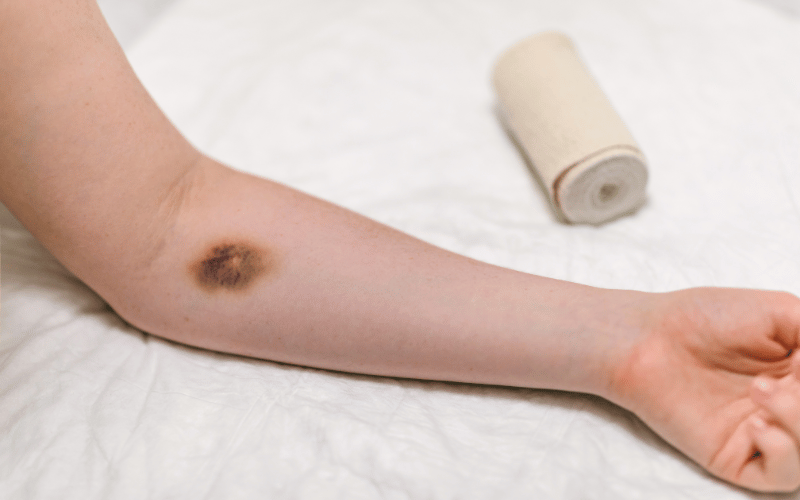7. Easy Bruising and Bleeding: The Clotting Challenges in Congestive Hepatopathy

Congestive hepatopathy’s impact on the liver’s synthetic function can lead to coagulopathy, presenting as easy bruising and bleeding. This symptom arises from the liver’s impaired ability to produce clotting factors, which are critical for blood coagulation. Patients may observe that minor bumps result in large bruises, or that they experience nosebleeds, gum bleeding, or prolonged bleeding from small cuts.
Initially, these bleeding tendencies might be brushed off as insignificant or attributed to external factors like rough handling. However, as the liver’s condition deteriorates, these signs can become more frequent and severe. Even daily activities like brushing teeth or simple kitchen tasks carry the risk of unanticipated bleeding, rendering everyday life precarious.
Internally, the consequences of this coagulopathy can be far more severe. Gastrointestinal bleeding is a critical concern, as varices—dilated veins in the esophagus or stomach—can rupture, leading to potentially life-threatening situations. The presence of blood in vomit or stool is an immediate red flag and necessitates urgent medical attention.
To diagnose and monitor the severity of clotting issues, healthcare providers rely on blood tests such as the prothrombin time (PT) and partial thromboplastin time (PTT), which measure the efficiency of blood clotting. These tests can be indicators of the progression of liver dysfunction and guide therapeutic interventions.
Management strategies may include the administration of vitamin K, which is essential for the synthesis of clotting factors, and in acute bleeding episodes, transfusions of plasma or specific clotting factor concentrates might be necessary. These interventions are part of a broader strategy to manage congestive hepatopathy and mitigate its effects on the clotting system, aiming to stabilize the patient’s condition and prevent complications. (7)